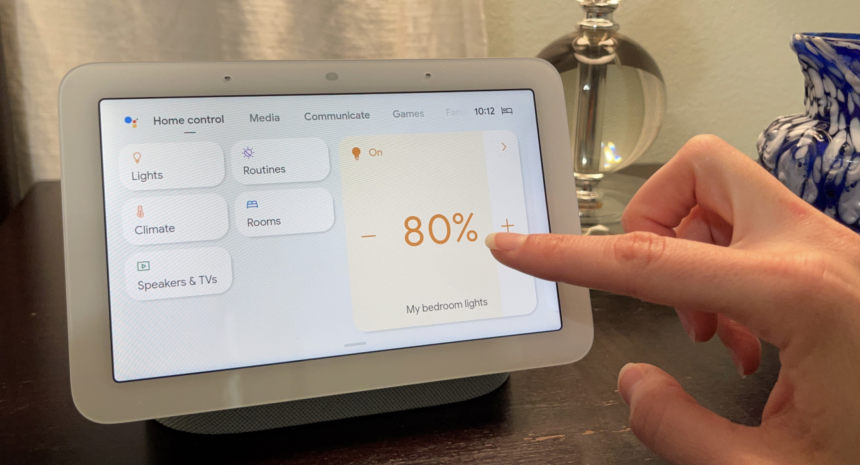As smart technology becomes increasingly essential to our way of life, our lives are increasingly connected to the internet. It is a situation that has seen homes become smarter, and it all raises the need to focus on privacy and security. Whether you opt for a professionally installed smart home system or go the DIY route, picking the right system is crucial. And the market has a lot of competition, meaning that smart security systems offer advanced features and compatibilities. Smart locks approved by locksmiths, indoor/outdoor cameras, video doorbells, and personalized authentication have become standards.
Tech giants like Amazon, Apple, Google, and Samsung lead the pack in the manufacturing of smart devices that create a more seamless, hyper-personalized, intuitively connected home environment. But the potential vulnerabilities, like hacking, associated with the collection of intimate data call for stringent privacy and security. Hence, we have compiled a few chief measures to implement when setting up your smart home security system.
1). Multi-factor Authentication
The smart appliances in your home, including your smart security system on your network, use usernames and passwords. Therefore, you must keep your login credentials current and use a multi-factor authentication protocol. For instance, you can use a short-term secret code that authenticates the password input. The code can be texted to you when trying to access your device or system. Fortunately, most smart appliances and systems include default multi-factor authentication.
2). Upgrade Your Router And Invest In A VPN
Your Wi-Fi is your smart home’s gateway to the internet; thus, it is the most significant security concern. Set up your network, ensuring it has a robust password, keeps the router’s firmware up-to-date, has WPA2-level security, and uses a unique name. Consider upgrading to a newer model if your router is over five years old. You will have better speeds and security. Also, make sure the new router is VPN-compatible. A VPN on your router to ensure your home has a safe, encrypted internet connection. It prevents third-party activity on your network and ensures nobody, not even your ISP, can monitor the activity on your home’s smart devices.
3). Use Strong Passwords
Your smart home security system is as secure as the passwords you use. Hence, let your robust security measures start with a strong password for your Wi-Fi router, which requires connected devices to sign in to access the internet. Many Internet-of-Things (IoT) gadgets run on apps that require login credentials to connect to your network. So, create unique authentication details for each app and account to ensure that if one device’s password is compromised, the others remain secure. The logins must be hard to guess, but having too many passwords presents a challenge. Writing the login credentials down on paper is not advisable. Consider investing in a password management system that stores and syncs the passwords between your devices.
4). Routinely Update Your Gadgets
Smart tech devices and security systems run on software that must be updated regularly. The update fixes security flaws and adds new features. It is best to allow updates from the manufacturer. Visit the manufacturer’s website to learn about updates for the different devices you have in your smart home and how to get updates for appliances or gadgets that never request updates. Ideally, replacing such a device is the best route. Stay abreast of how frequently the updates are released because you have better security when you get regular updates. You could always use a company GoKonnect smart home security systems in Ireland to fully automate your home.
5). Use Next-generation Firewall (NGFW)
Firewalls are standard in routers, but not enough for your privacy and security. You must bolster your firewall’s crucial security components, like QoS management, VPN, SSL/SSH interception, content filtering, malware protection, and an IPS (Intrusion Prevention System). An NGFW (next-generation firewall) is your best bet because they integrate additional security features with the conventional firewall. You unquestionably should invest in a next-generation firewall to safeguard your smart home environment from cyberattacks.
6). Keep Privacy Setting On And Disable Unused Features
The convenience of controlling your home’s smart appliances remotely is the top selling point; this is a significant benefit of investing in the technology. However, it is a convenience that cyber attackers can leverage to gain entry by exploiting unused features in your devices. People often don’t close their Bluetooth connections, voice control, and remote access activities. It is harder for hackers to take advantage of unused features when they are disabled and your privacy settings are on.
Final Thoughts
Taking control of the security protocols is the best way to ensure you safeguard your smart home environment. You reduce the risk of cybersecurity breaches by making sure all the IoT devices operate on recommended security measures, as we have suggested. It takes an unsecured entry point or one rogue device for your smart home security to experience issues. Yes, automation, remote access, and voice commands give users substantial control over their smart home environment, but this also demands considerable responsibility.
Lynn Martelli is an editor at Readability. She received her MFA in Creative Writing from Antioch University and has worked as an editor for over 10 years. Lynn has edited a wide variety of books, including fiction, non-fiction, memoirs, and more. In her free time, Lynn enjoys reading, writing, and spending time with her family and friends.















